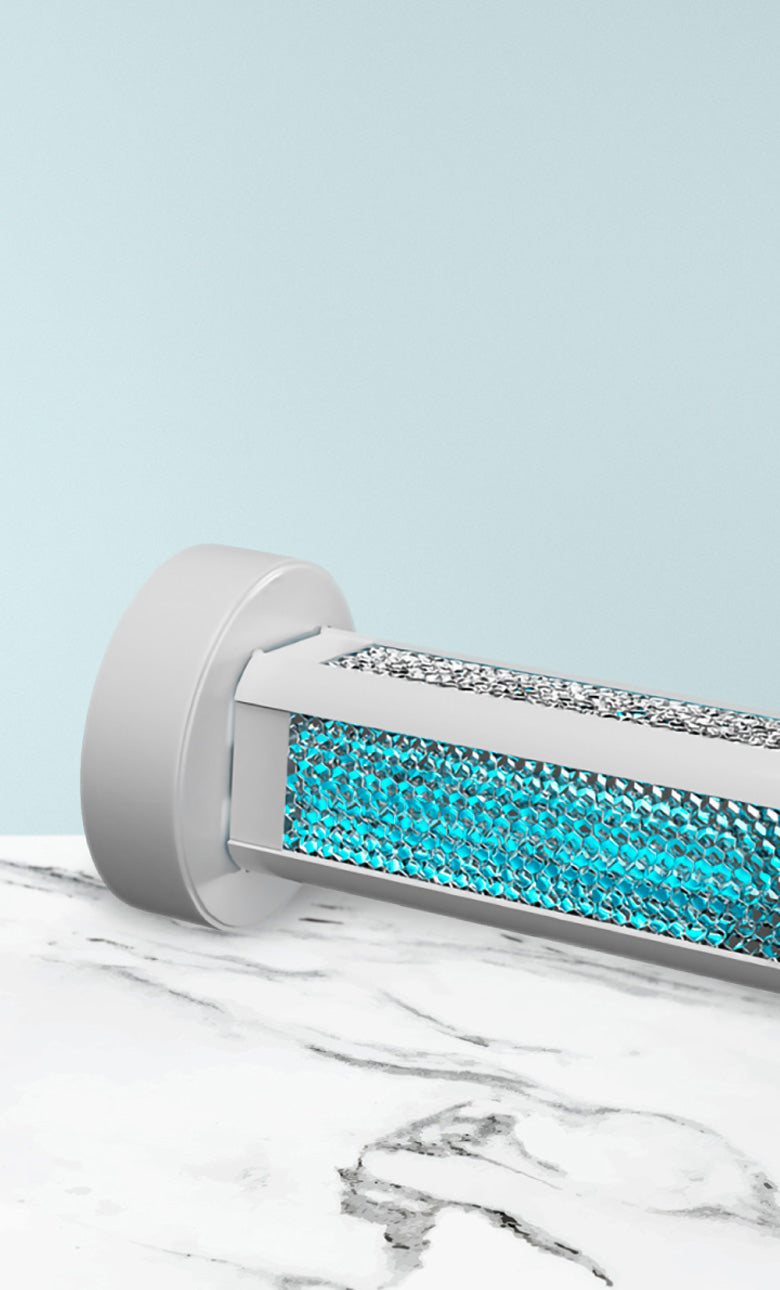Schools are highly associated with the spread of infectious diseases(1) due to the close contact between large groups of people across a variety of ages. In particular, younger groups who haven’t yet developed good personal hygiene habits, who may have lowered immunity to certain diseases or who don’t yet understand the consequences related to the spread of disease are at risk of both cross transmission and contraction of infectious disease.
A survey released by the Centres for Disease Control and Prevention suggests that each year(2):
• 40% of children are absent from school as a result of an infection
• 22 million days are collectively lost to learners due to infection with the common cold
• 38 million school days are collectively lost to learners due to infection with the Flu (influenza virus)
A number of infectious diseases that come from sources such as bacteria, viruses, fungi, protozoa and parasites need to be continually considered as they may cause diseases such as the common cold, the Flu, scarlet fever, meningitis, measles, mumps and chickenpox or conditions such as athlete’s foot, ringworm and scabies. More recently, there is also a worry about the spread of the novel coronavirus, a respiratory transmitted virus that causes the COVID-19 disease.

In order to protect everyone entering the school property from infections and control their spread, it is necessary for all school staff to familiarize themselves with the risk involved in infectious disease and the transmission thereof. One of the main factors to consider is how to implement appropriate and effective precautions as well as basic hygiene practices in the school setting, where consistent physical distancing and the sole use of equipment or materials may not always be possible.
At this time, it is likely that standard procedures and protocols have been considered to maintain hygienic learning environments. Hand washing, physical and regular cleaning of surfaces as well as intermittent cleaning of tools and materials used in the classroom are some of the most common practices that are part of the daily routine.
The question that remains, however, is whether intermittent cleaning and sanitizing is enough to contain and effectively reduce the spread of some of the most common infections seen in the school environment.
TAKING CONTROL OF ENVIRONMENTAL RISK OF INFECTIONS WITH NO-TOUCH DISINFECTION
Both the source of infection and the mode of transmission of infections needs to be evaluated in order to truly manage the risk of transmission in the school environment.
There are two main areas for consideration for transmission of disease: direct and indirect.

Direct infection may result primarily from scholars, teachers and any person entering the school environment or when coming into contact with one of these persons.
The close contact of people in the school environment poses great challenges in reducing direct cross transmission of infection

The indirect source of infection may be from the environment, which includes the air, surfaces and various objects that may contain infected particles as a result of coming into contact with an infected person. In the school environment, shared equipment may pose a major risk for the cross transmission of infections. Depending on the nature of the microorganism responsible for the infection, the time in which the microorganism remains active on an inanimate object differs greatly.
The mode of transmission to consider is how the infective agent is transferred from one place to another, which is primarily through droplets derived from loud speech, spitting, coughing, or sneezing, and additionally, from body fluids from the mucous membranes in the nose, mouth and eyes, which may be transferred from a person’s hands to another person, a surface or an object.
These types of infection are best controlled through environmental disinfection and good hygiene measures.
The trouble with the current measures are that cleaning and disinfection are intermittent; it is, however, understandable that staff are unable to provide continuous and effective sanitization along with the other tasks they have been set out to achieve throughout the day.
There is another solution: a smart disinfection device that is installed directly into the HVAC system.
INTRODUCING CAPSR TECHNOLOGY FOR ANY INDOOR ENVIRONMENT
The CASPR device is an in-duct system that is easily installed into the HVAC, which offers continuous disinfection of the indoor environment in which it is installed, and has proven effectiveness for a wide variety of settings including schools, hospitals, long term care homes, dental practices, office buildings and many more. CASPR can be scaled to fit any size facility and configured to maximize efficacy and efficiency.
The Natural Catalytic Converter technology contains an enclosed UV light photocatalyst, which oxidizes organic materials in the environment. Harmless oxidants, including hydrogen peroxide compounds, are released into the air where they destroy mold, viruses and bacteria while also eliminating the odors they may produce, in a completely safe manner.
These oxidant molecules also settle on high-touch and hard to reach surfaces and objects, effectively disinfecting and sanitizing them on a continuous basis, eliminating the need for traditional physical sanitization and disinfection with rags and wipes.

Research using the CASPR technology has shown up to a rate of 99.96% elimination of a vast number of potentially infectious microorganism contamination of surfaces all while leaving no residues, and producing no noise or odors. With proven safety, the CASPR can be used even in continually occupied spaces and has been shown to be completely safe to use throughout food preparation stations.
In addition to significantly reducing the risk of airborne cross transmission of bacteria and viruses, the CASPR device has been proven effective against molds, odors and VOCs, a common concern for parents, particularly those who have children who suffer from asthma.
This truly is a no-touch solution to vast improvements in air quality throughout the school environment, decreasing both the risk of coronavirus transmission and generally contributing to the safe and effective learning environment that scholars need to excel.
Yet another technology, proven to be effective for both surface and environmental sanitization and disinfection comes in the form of a liquid hypochlorous solution.
BRIOTECH AS A SURFACE AND AIR DISINFECTION AGENT
For many years, hypochlorous acid has been studied as a disinfection agent as it is a compound produced by the body’s own immune system to fight foreign pathogens. Until recently, manufacturers have been unable to safely reproduce the elements of this natural disinfection compound, resulting instead in a highly unstable toxic substance that has not been safe for use.
Briotech has completely changed this. Having developed a safe hypochlorous acid (HOCL) solution, rigorous testing confirms that Briotech Multi-Surface Sanitizer contains no compound, which at any concentration, may be considered hazardous to health.
Research(4) on HOCL provides evidence to support the use of the solution to effectively kill some of the most common infectious microorganisms that cause disease in humans.

Briotech may be used to quickly sanitize surfaces, clean up spills and as an air misting sanitization spray that inactivates microorganisms where after it dissolves into a harmless water and salt solution without leaving any bothersome residues.
This potent disinfectant has such a high safety profile that it is also in use in the healthcare setting as a direct-contact solution to sterilize even the most sensitive tissues such as open wounds, oral and eye tissue infections.
A brilliant solution that is 100 x more effective than bleach, and with far superior safety, Briotech offers a cleaning and disinfection solution available for use in even the most sensitive of environments, and is simply perfect for use throughout the school day.
WEARING MASKS AT SCHOOL
While some schools may not have implemented mandatory mask or face covering protocols while students are partaking in school-related activities, leading experts have suggested that the use of a mask or face covering is one of the most valuable tools for protection against airborne diseases, particularly when physical distancing may not be possible. In these instances, for example, while walking in hallways or while travelling on school busses, wearing a mask may be necessary.

Many of the masks available today offer a simple level of protection against respiratory infections such as the coronavirus. They are often recommended for single-use and may not offer complete protection from droplet transmission of airborne viral particles.
Taking into account function as well as comfort, the POINT.1 mask has taken mask-wearing to a new level. Not only does the technology include a fishnet weave as the filtration system, which has been proven to restrict the flow of dust, airborne particles and microorganisms, the fibers are spaced no more than 1μm apart, providing a nanofiltration system. Compare that with typical masks with fibers spaced 10μm apart and the N95 at 3μm apart. there’s no doubt as to the function of the POINT.1
Yet another feature of the POINT.1 is its ability to be washed and reused. Other masks lose their filtration abilities when they come into contact with moisture from breathing or cleaning while the POINT.1 has been proved to remain 94% effective against contaminants even after 20 washes.

Comfort was a significant consideration in the design of the POINT.1 mask and these lightweight masks have been created with multiple comfort zones for long wear in both adults and children.
Advances in technology are creating impressive options for schools to take the safety of all students and staff into account, reducing the risk of infections while maintaining a functional, fun and stable learning environment.
REFERENCES:
1. Guidelines on Prevention of Communicable Diseases in Schools / Kindergartens /Kindergartens-cum-Child Care Centres / Child Care Centres. Department of Health. June 2014 Edition, updated July 2019.
2. Centres for Disease Control and Prevention. Infectious diseases at schools. 2011.
3. Heald-Sargent T, Muller WJ, Zheng X, Rippe J, Patel AB, Kociolek LK. Age-Related Differences in Nasopharyngeal Severe Acute Respiratory Syndrome Coronavirus 2 (SARS-CoV-2) Levels in Patients With Mild to Moderate Coronavirus Disease 2019 (COVID-19). JAMA Pediatr.
4. Hughson AG, Race B, Kraus A, Sangaré LR, Robins L, Groveman BR, et al. (2016) Inactivation of Prions and Amyloid Seeds with Hypochlorous Acid. PLoS Pathog 12(9): e1005914.


